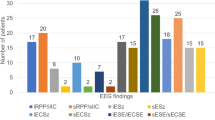Summary
Following brain injury increased glutamate release is linked to sustained neuronal activation resulting in excitotoxic tissue damage. Isoflurane anesthesia has been shown to decrease electroencephalo-graphic (EEG) activity and extracellular (e.c.) glutamate, possibly attenuating excitotoxic tissue damage. However, based on clinical experience EEG activity can fluctuate despite stable isoflurane concentrations. Therefore, the aims of this study were to investigate the impact of neuronal activity assessed by quantitative EEG on e.c. glutamate during isoflurane anesthesia following controlled cortical impact injury (CCII).
In 10 rats balanced anesthesia using isoflurane was induced at 4 hours after CCII. Under steady-state conditions maintaining isoflurane at 1.8 vol%, EEG was recorded for 3 hours. During this period, e.c. glutamate was sampled in the pericontusional cortex by microdialysis.
Despite maintaining isoflurane at 1.8 vol%, neuronal activity expressed as low frequency EEG power showed marked fluctuations. Spontaneous increases in neuronal activity coincided with elevated e.c. glutamate levels and vice versa. Overall, EEG power correlated significantly with pathologically elevated e.c. glutamate levels (n = 58; R2 = 0.54; p < 0.05).
Despite unchanged isoflurane concentrations fluctuations in neuronal activity were reflected by altered EEG power and e.c. glutamate concentrations. Therefore, neuronal activity needs to be considered for the interpretation of e.c. glutamate levels.
Access this chapter
Tax calculation will be finalised at checkout
Purchases are for personal use only
Similar content being viewed by others
References
Liachenko S, Tang P, Somogyi GT, Xu Y (1999) Concentration-dependent isoflurane effects on depolarization-evoked glutamate and GAB A outflows from mouse brain slices. Br J Pharmacol 127: 131–138
Maclver B, Mikulec AA, Amagasu SM, Monroe VA (1996) Volatile anesthetics depress glutamate transmission via presynaptic actions. Anesthesiology 85: 823–834
Martin DC, Plagenhoef M, Abraham J, Dennison RL, Aronstam RS (1995) Volatile anesthetics and glutamate activation of N-Methyl-D-Aspartate receptors. Biochem Pharmacol 49: 809–817
Nilsson P, Ronne-Engström E, Flink R, Ungerstedt U, Carlson H, Hillered L (1994) Epileptic seizure activity in the acute phase following cortical impact trauma in rat. Brain Res 637: 227–232
Obrenovitch TP, Urenjak J (1997) Altered glutamatergic transmission in neurological disorders: from high extracellular glutamate to excessive synaptic efficacy. Prog Neurobiol 51: 39–87
Patel PM, Drummond JC, Cole DJ, Goskowicz RL (1995) Isoflurane reduces ischemia-induced glutamate release in rats subjected to forebrain ischemia. Anesthesiology 82: 996–1003
Stover JF, Schöning B, Beyer TF, Woiciechowsky C, Unterberg AW (2000) Temporal profile of cerebrospinal fluid glutamate, interleukin-6, and tumor necrosis factor-a in relation to brain edema and contusion following controlled cortical impact injury in rats. Neurosci Lett 288: 25–28
Stover JF, Pleines UE, Morganti-Kossmann MC et al (1999) Thiopental attenuates energetic impairment but fails to normalize cerebrospinal fluid glutamate in brain-injured patients. Crit Care Med 27: 1351–1357
Author information
Authors and Affiliations
Editor information
Editors and Affiliations
Rights and permissions
Copyright information
© 2002 Springer-Verlag
About this paper
Cite this paper
Sakowitz, O.W., Unterberg, A.W., Stover, J.F. (2002). Neuronal Activity Determined by Quantitative EEG and Cortical Microdialysis is Increased Following Controlled Cortical Impact Injury in Rats. In: Czosnyka, M., Pickard, J.D., Kirkpatrick, P.J., Smielewski, P., Hutchinson, P. (eds) Intracranial Pressure and Brain Biochemical Monitoring. Acta Neurochirurgica Supplements, vol 81. Springer, Vienna. https://doi.org/10.1007/978-3-7091-6738-0_57
Download citation
DOI: https://doi.org/10.1007/978-3-7091-6738-0_57
Publisher Name: Springer, Vienna
Print ISBN: 978-3-7091-7397-8
Online ISBN: 978-3-7091-6738-0
eBook Packages: Springer Book Archive




